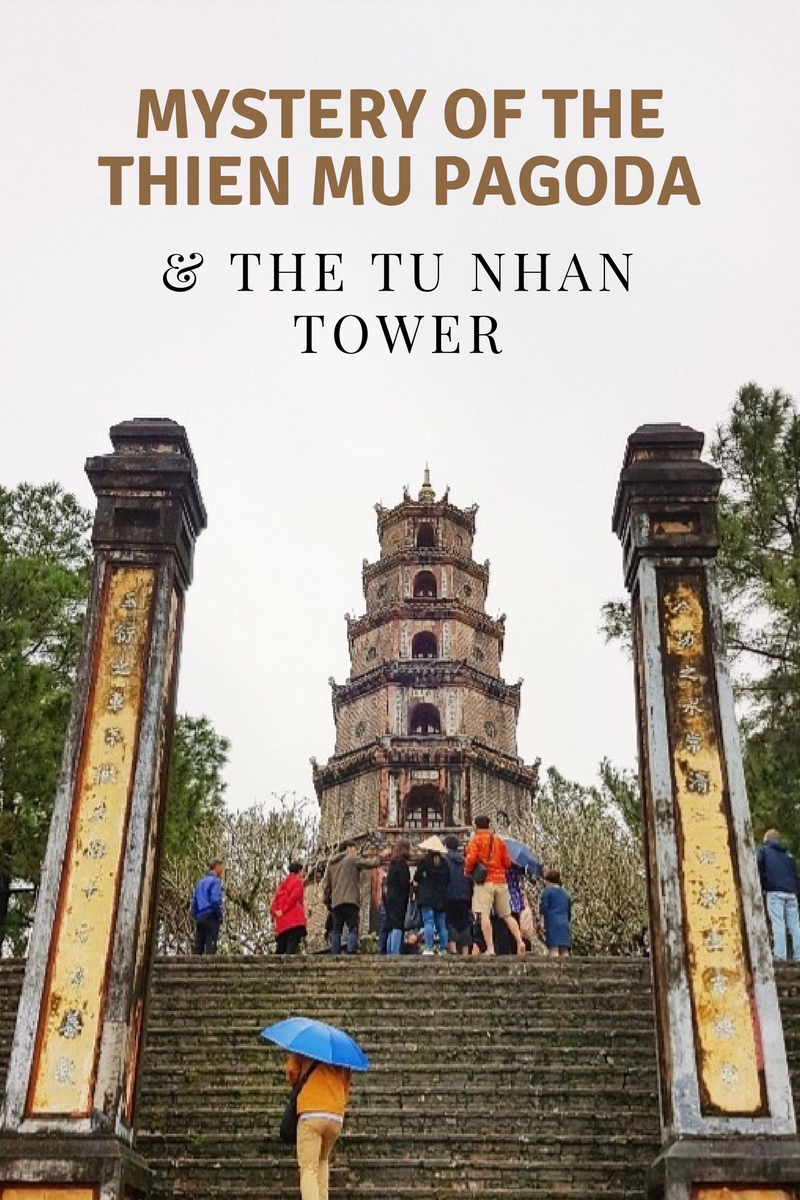
The Thien Mu Pagoda, also known as the Pagoda of the Celestial Lady, is an infamous relic temple in Hue. Overlooking the Perfume River, Thien Mu Pagoda was actually built based entirely on a prophecy made by a mystical celestial being way before the first dynasty ruled. Historians recorded that in 1601, one of the Nguyen lords of the south met a celestial lady dressed in red and blue on the Ha Khe hill by the Perfume River. As legend tells it, she prophesized that a lord will erect a pagoda where she stood for the country’s prosperity. Immediately after her prophecy, she vanished into thin air! Captivated by the celestial encounter, the Nguyen lord instructed to build the pagoda there as it stands today.
Built outside of the Purple Forbidden City compound, the Thien Mu Pagoda is a resemblance of a miniature version of Nanjing’s fabled Porcelain Tower built in the 15th century during the Ming dynasty. A seven storey octagonal monument, the Thien Mu Pagoda was significantly much smaller and lower in construction costs than the latter. However, this did not limit its further development. When the first and last Nguyen dynasty came to rule, the compound of the pagoda were frequently expanded by the early emperors. Built mostly out of kilned bricks and pine, the Thien Mu Pagoda still stands more than 800 years and has outlived the emperors of the Nguyen dynasty. Most of its colour and intricate works of art along the steeples and roof ends have all turned black with moss and neglect. The two trees that intertwined at the entrance of the pagoda is now gone and what’s left is a mere patch of sand and some grass.
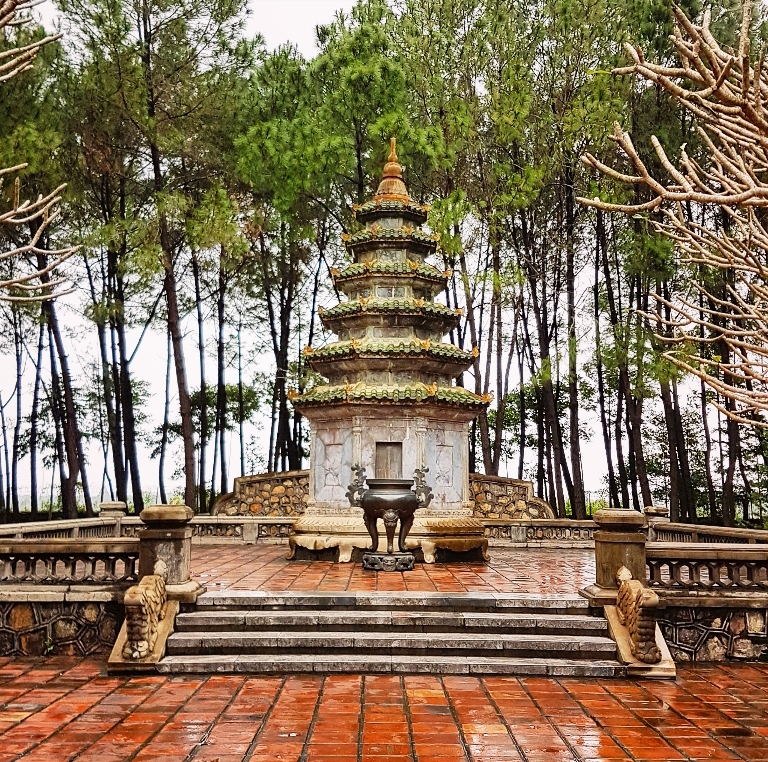
According to olden day’s references, seated within the perimeter of the Thien Mu Pagoda is another “tower” built by one of the late emperors in 1844. The Tu Nhan tower, also known as Phuoc Duyen tower, is often mistaken for the Thien Mu Pagoda as both shared some identical similarities of technical descriptions; i.e “being octagonal in shape and has seven storeys”. Not located at the entrance but way behind towards the back of the pagoda compound, the octagonal Tu Nhan tower was actually only two metres in height even though it consists of seven “storeys”. Thus it was not considered a ‘tower’.
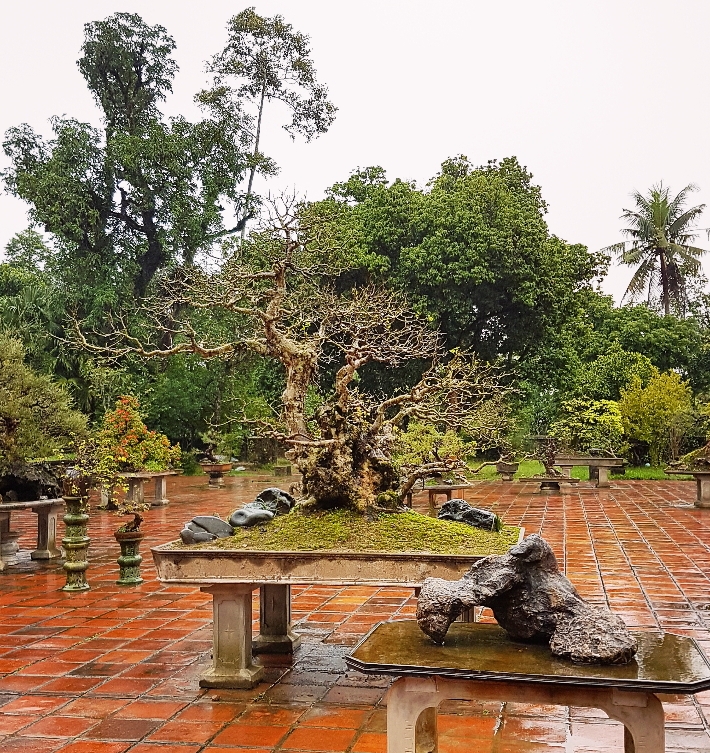
The bonsai garden within the compound, was once the stellar of the zen-ness of this temple. Today, it is only left with a handful of them, accompanied by a few twigs and branches. Most of the bonsais have withered from poor upkeep and the zen garden lake’s lotus flowers have long since rotted away.
The prized giant bronze bell that was cast by one of the late emperors was removed from the pagoda and nestled in a small pedestal that is pretty obscure to the public. This huge ancient bell weighs more than three tons and had a resonance as far as 10km away. Seated within close proximity, a giant marble tortoise that symbolises longevity was erected in honour for the contributions of the late Emperor Cho. This is the only tortoise depicted in the whole of Hue that differs from the original shamanistic belief of steles and dragons.
Toward the end of the dynasty, religions were being eradicated and outlawed. A thwarted form of Confucianism was being subjugated into society causing the pagoda to be abandoned and in a total state of disrepair. Even after the Indo-China war and the great reunification war or the Vietnam War, the pagoda and its surrounding temple structures were neglected until recently when Hue was recognised as a UNESCO world heritage site. Millions of tourists dollars started to pour in like the rain here in Hue. Most of the main buildings are repaired but the grounds remained soiled with moss and grime, making it very slippery when wet.
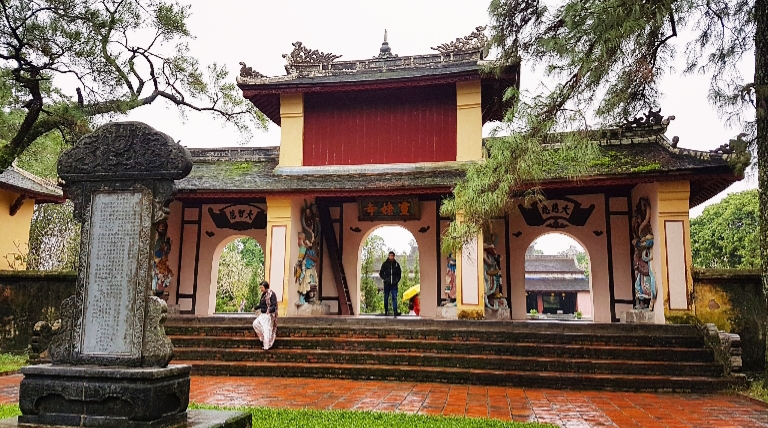
There are still small religious bases that have survived the purge and now operate as shelters and even small vegan restaurants. There are also many Catholic and Protestant churches within the vicinity that were once in hiding but are now open to believers. Much of Hue’s history is deeply conserved in the air around this Pagoda compound and most of its miracles and mystique is now shrouded behind its disrepair state.
But nevertheless, no one knows if the celestial lady’s prophecy has ever been fulfilled or has ever come to pass given that the monarchy of the Nguyen dynasty ended in less than two hundred years. Which of the Nguyen lords of past would embellish this prophecy? Or was the prophecy incorrectly interpreted and was just a proclaimed myth to bolster support for the Nguyen lords? Thus the mystery of the Thien Mu Pagoda and its prophecy still lingers as mysteriously as the phenomenons around here in Hue as it slowly passes from history into legend and legend into myth.
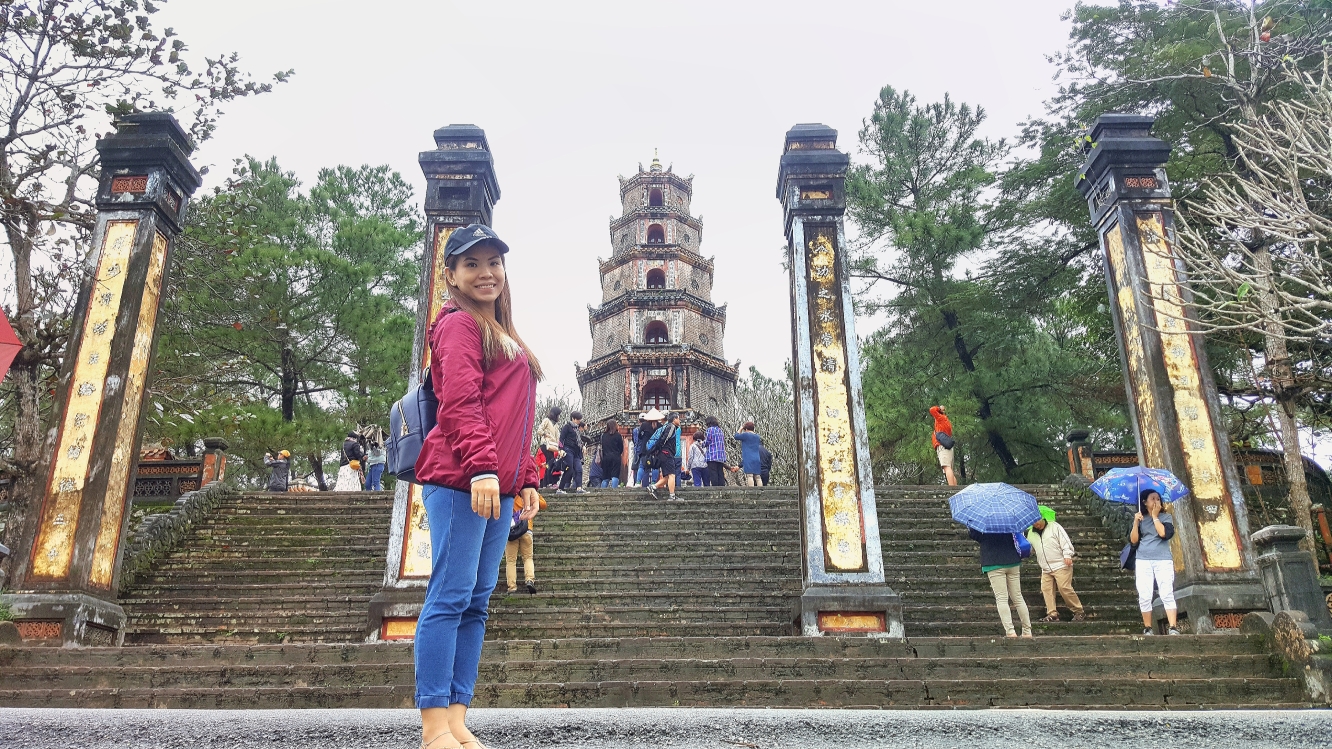
Coincidentally, I was also in red and blue. Maybe I was the celestial lady!
Categories: Destinations, Hue, Vietnam

















Beautiful photos of an interesting place.
LikeLike